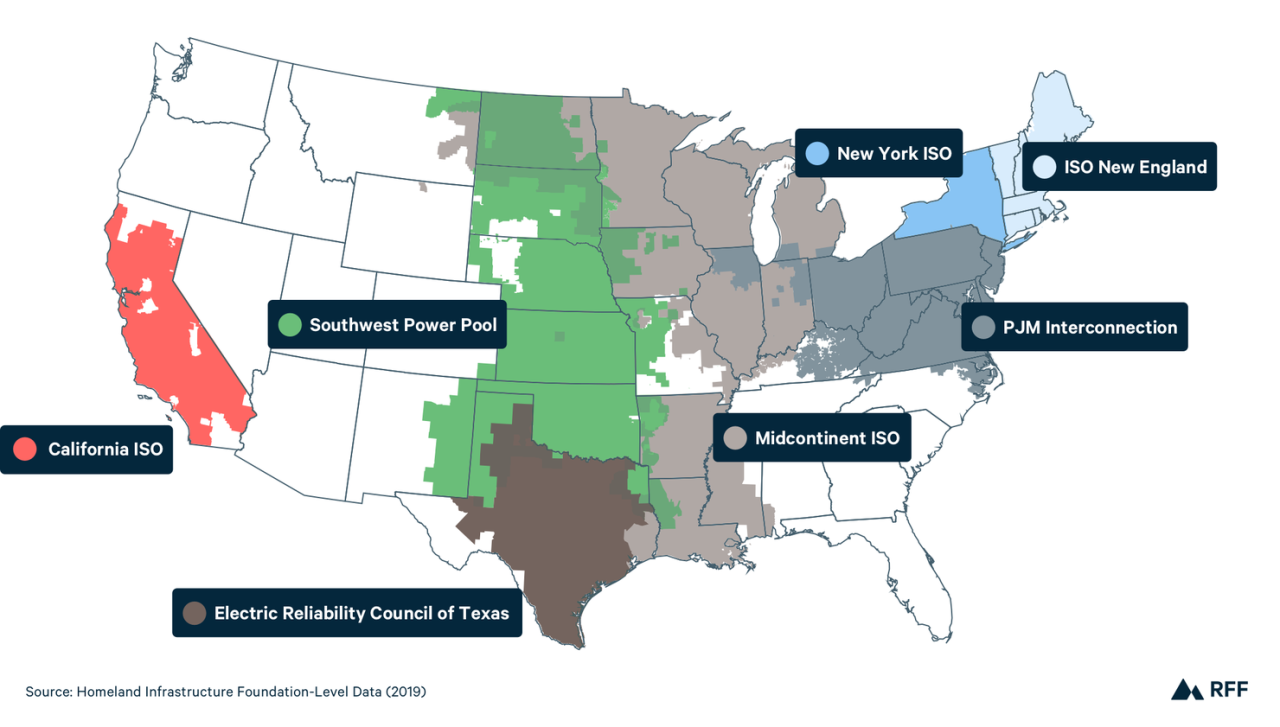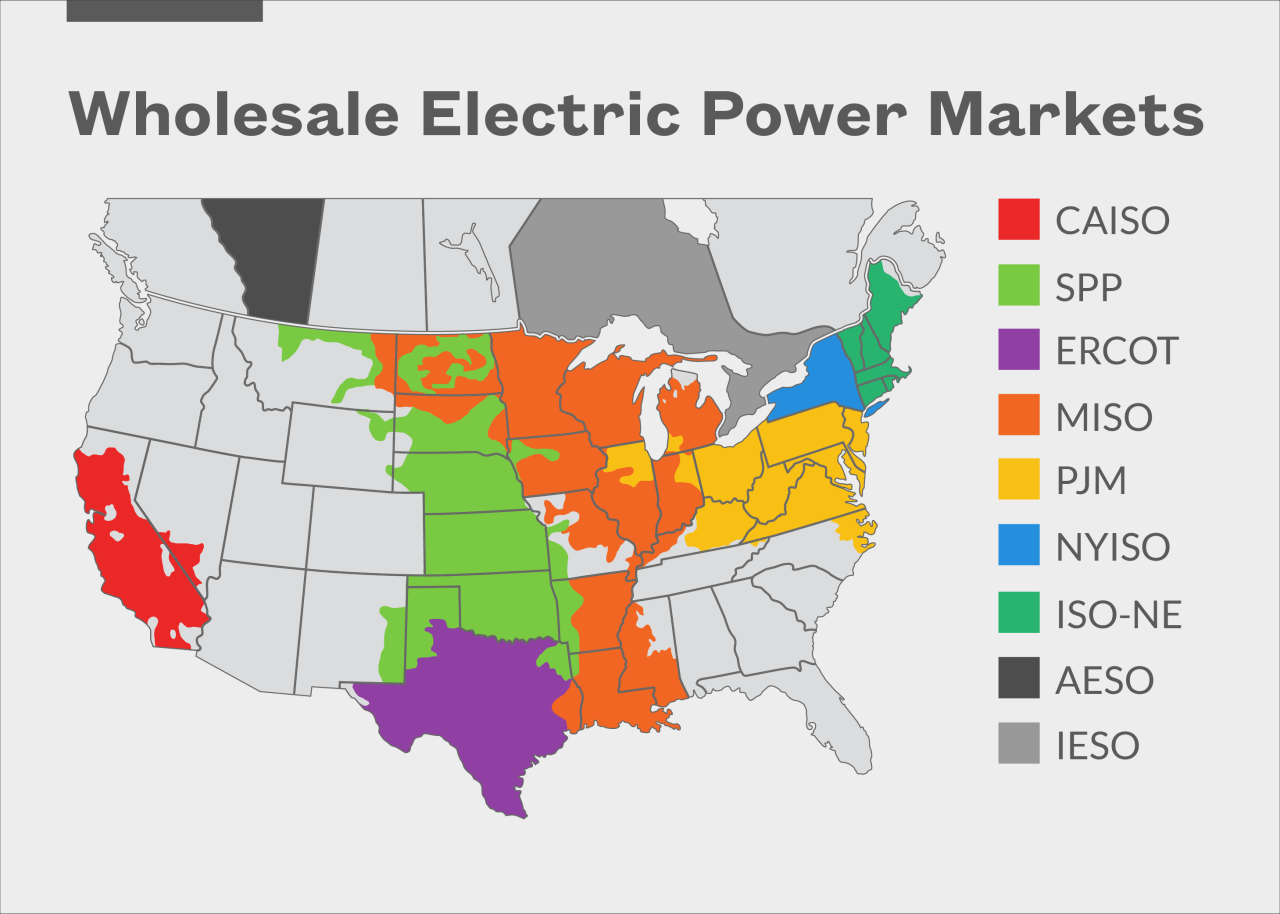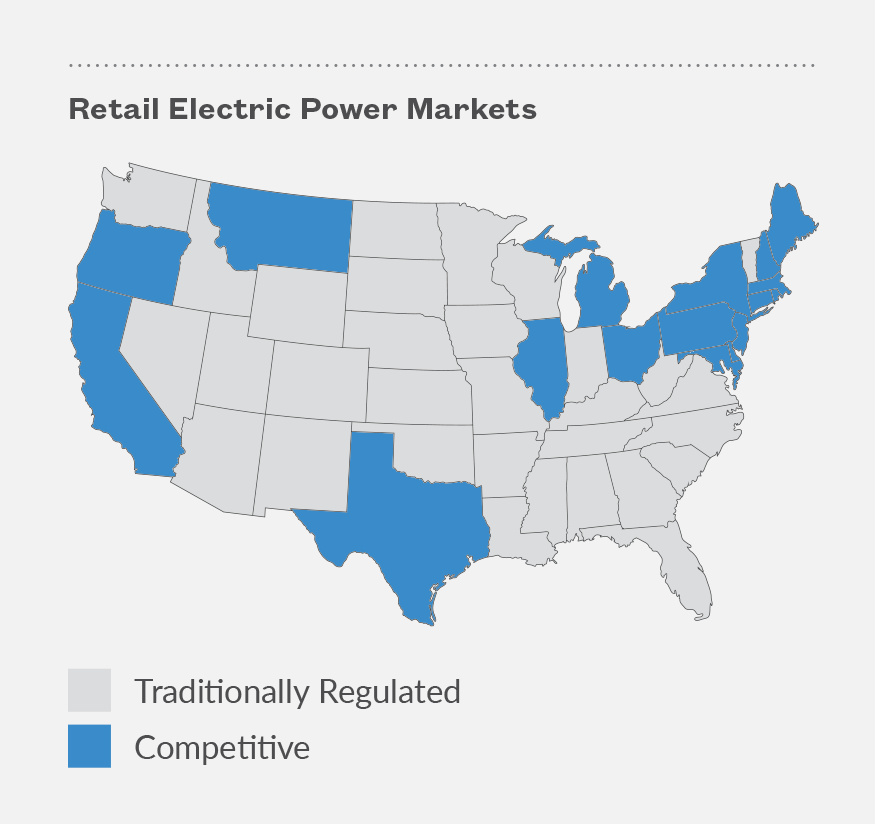Delving into the realm of competitive electric markets, this guide sheds light on the top states leading the way in this innovative industry. Get ready to explore the dynamic landscape of electricity competition and discover which states are setting the benchmark for others to follow.
Overview of Competitive Electric Markets

In competitive electric markets, multiple suppliers are allowed to generate and sell electricity to consumers. This creates a competitive environment where consumers have the ability to choose their electricity provider based on factors like price, renewable energy options, and customer service.
Having competitive electric markets can lead to lower prices for consumers as suppliers compete to offer the best rates and services. It also encourages innovation and investment in new technologies within the industry.
Key Players in Competitive Electric Markets
- Retail Electricity Providers (REPs): These are the companies that sell electricity directly to consumers. They offer a variety of pricing plans and services to attract customers.
- Transmission and Distribution Utilities: These companies own and maintain the infrastructure needed to deliver electricity to homes and businesses. They are responsible for the physical delivery of electricity.
- Regulatory Agencies: These government entities oversee the competitive electric markets to ensure fair practices and consumer protection. They also set rules and regulations that govern how the markets operate.
- Independent System Operators (ISOs): ISOs manage the flow of electricity on the grid and ensure that supply meets demand in real-time. They play a crucial role in maintaining the reliability of the electric system.
Criteria for Evaluating Electric Market Competitiveness

Electric markets are evaluated based on several criteria to determine their level of competitiveness. These criteria help to assess the effectiveness of competition in the market, which ultimately benefits consumers by offering them more choices and potentially lower prices.
Market Structure
The structure of the market plays a crucial role in determining its competitiveness. A market with multiple suppliers and retailers that are not dominated by a single entity is considered more competitive. States that have unbundled their utilities and allowed for retail competition tend to have a more competitive market structure.
Price Transparency
Price transparency is another important criterion for evaluating electric market competitiveness. Consumers should have access to clear and easily understandable pricing information from different suppliers. States that have implemented measures to enhance price transparency, such as requiring suppliers to provide detailed pricing information, are considered more competitive.
Regulatory Environment
The regulatory environment also impacts the competitiveness of electric markets. A regulatory framework that promotes fair competition, prevents anti-competitive practices, and ensures consumer protection is essential for a competitive market. States with effective regulatory bodies that oversee the market and enforce rules and regulations tend to have more competitive electric markets.
Customer Choice
The ability of consumers to choose their electricity providers is a key indicator of market competitiveness. States that offer consumers a wide range of choices in terms of suppliers, pricing plans, and renewable energy options are considered to have a more competitive market.
Customer choice promotes innovation and encourages suppliers to offer better services and prices to attract and retain customers.
Examples of States
Texas
Texas is often cited as a state with a highly competitive electric market due to its deregulated structure, which allows for retail competition and consumer choice.
Illinois
Illinois is another state that has successfully implemented retail competition, providing consumers with a variety of options and promoting market competitiveness.
Pennsylvania
Pennsylvania has made strides in enhancing price transparency and customer choice, contributing to a more competitive electric market in the state.
Top States with Competitive Electric Markets
Several states in the US are known for their competitive electric markets, where consumers have the ability to choose their electricity providers based on pricing and services. These states have implemented policies and regulations that promote competition and innovation in the electric industry.
Texas
Texas is one of the top states with a competitive electric market. The state has a deregulated electricity market, allowing consumers to choose from a variety of retail electricity providers. This competition has led to lower prices and innovative service offerings for consumers.
Pennsylvania
Pennsylvania is another state with a competitive electric market. The state's Electricity Generation Customer Choice and Competition Act allows consumers to shop for electricity plans from different suppliers. This has resulted in increased competition, lower prices, and more choices for consumers.
Illinois
Illinois is also known for its competitive electric market. The state has implemented policies to encourage competition among electricity suppliers, leading to cost savings and better services for consumers. Illinois residents have the option to choose their electricity provider based on their preferences.
Factors Contributing to Competitive Electric Markets
- State regulations promoting competition
- Deregulation of the electricity market
- Availability of multiple electricity providers
- Transparent pricing and billing practices
Impact on Consumers
- Lower electricity prices due to competition
- Increased choices and flexibility in selecting electricity plans
- Improved customer service and innovation from providers
- Empowerment of consumers to switch providers for better deals
Market Structures in Competitive Electric Markets

Electric markets with competitive structures often operate under different market designs to promote efficiency and innovation. These market structures play a crucial role in shaping how electricity is generated, transmitted, and consumed within a competitive market environment.
Retail Competition
In states with retail competition, consumers have the choice to select their electricity provider from a variety of retail suppliers. This allows consumers to shop for electricity plans that best suit their needs in terms of pricing, renewable energy options, and customer service.
States like Texas and Illinois have successfully implemented retail competition, leading to increased consumer choice and innovation in the retail electricity market.
Wholesale Market Integration
Wholesale market integration involves the trading of electricity in wholesale markets where generators and suppliers compete to provide electricity at the lowest possible cost. States like California and New York have integrated wholesale markets that enable efficient price discovery and grid reliability through competition among market participants.
Capacity Markets
Capacity markets ensure that there is enough electricity generation capacity available to meet the demand for electricity in the future. Market participants are compensated for maintaining available capacity, which helps in ensuring grid reliability. PJM Interconnection, which operates in several states in the Mid-Atlantic and Midwest regions, has a capacity market that incentivizes investment in new generation capacity.
Energy Imbalance Markets
Energy imbalance markets help balance the supply and demand of electricity in real-time, especially in regions with a high penetration of renewable energy resources. These markets enable efficient utilization of renewable energy sources and help in maintaining grid reliability. The California Independent System Operator (CAISO) operates an energy imbalance market to manage imbalances in real-time across the Western U.S.
grid.
Bilateral Contracts
Bilateral contracts involve direct agreements between buyers and sellers of electricity outside of the organized wholesale markets. These contracts allow parties to customize terms and conditions based on their specific needs, providing flexibility in electricity procurement. States like Pennsylvania and New Jersey have seen the successful implementation of bilateral contracts in their competitive electricity markets.
Ultimate Conclusion
In conclusion, the top states with competitive electric markets are paving the way for a more efficient and consumer-friendly electricity industry. By understanding the criteria, market structures, and impact on consumers, it's clear that these states are at the forefront of innovation in the energy sector.
User Queries
What are competitive electric markets?
Competitive electric markets are deregulated systems where multiple suppliers compete to provide electricity to consumers, offering choices and potentially lower prices.
How do competitive electric markets benefit consumers?
Consumers in competitive electric markets can choose their electricity provider, potentially leading to cost savings, innovative services, and better customer experiences.
Which factors contribute to a state having a competitive electric market?
Factors like deregulation, market competition, consumer choice, and regulatory oversight play a crucial role in determining if a state has a competitive electric market.











